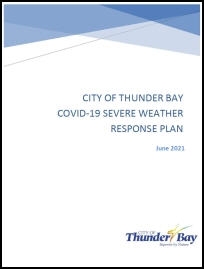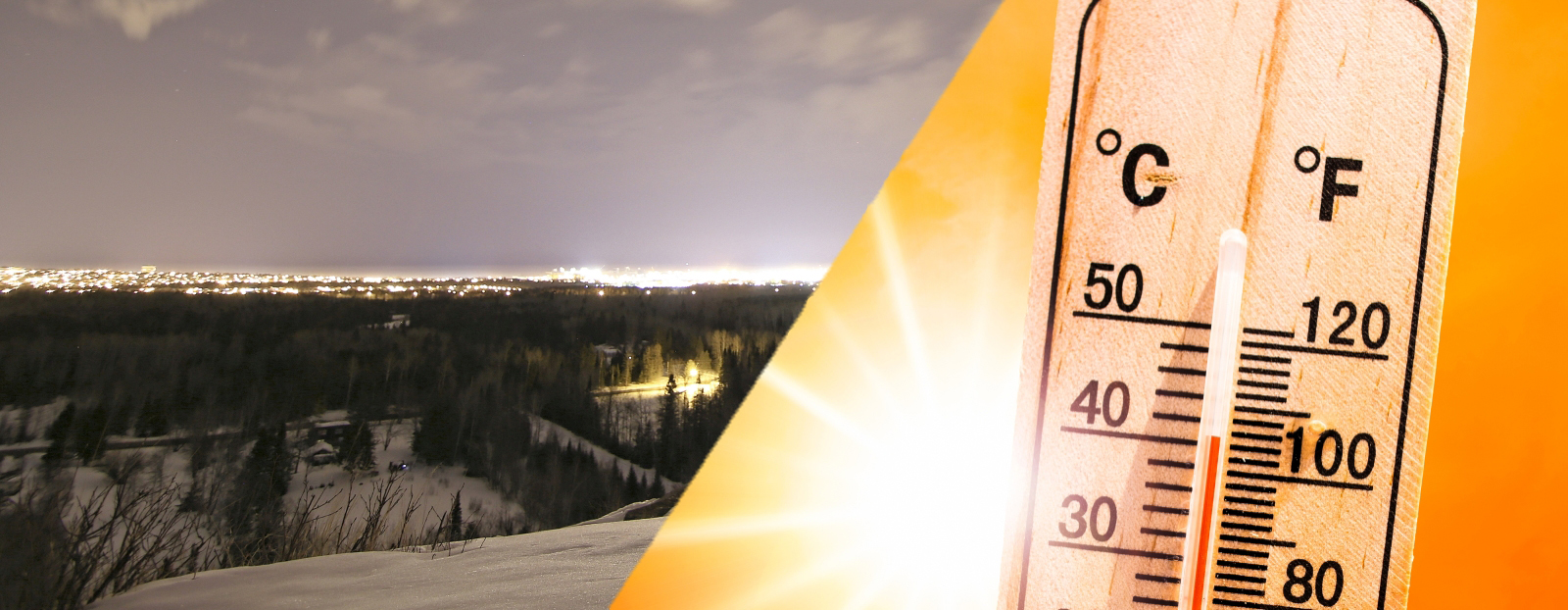 The goal of the City of Thunder Bay COVID-19 Severe Weather Response Plan is to help prevent health impacts of severe weather conditions on residents of Thunder Bay during the COVID-19 pandemic. The Plan includes a particular focus on preventing direct impacts of cold and heat exposure on people experiencing homelessness.
The goal of the City of Thunder Bay COVID-19 Severe Weather Response Plan is to help prevent health impacts of severe weather conditions on residents of Thunder Bay during the COVID-19 pandemic. The Plan includes a particular focus on preventing direct impacts of cold and heat exposure on people experiencing homelessness.
The plan’s objectives are to:
- Alert those most vulnerable to severe weather conditions that are either expected or currently exist;
- Help those most vulnerable to take appropriate precautions; and to
- Support the plans of community partners, helping coordinate responses to severe weather in the community of Thunder Bay.
Subscribe to severe weather alerts
Visit our subscribe page, and under NEWS, select SEVERE WEATHER ALERTS. Every time we issue a severe weather alert you will instantly be emailed the alert and accompanying information.
Sign-up for Severe Weather Alerts
Learn more about severe weather, health impacts, and COVID-19
Winter weather |
|
Winter weather poses a significant risk to exposed individuals, and weather warnings can help people prepare for dangerous weather. Winter storms, blizzards, snowfall warnings, and snow squalls involve large amounts of falling or blowing snow, creating dangerous driving and walking conditions, reduce visibility, and can cause power outages. Freezing rain is rain that freezes on impacts, and creates a thin layer of clear ice on the ground, making things slippery and dangerous! The cold rain can also soak through clothes, and make health problems like hypothermia more likely for people outside. Extreme cold and wind chill are always dangerous, and create risks of hypothermia and frost bite. Wind chill can make the air feel even colder, and can quickly cause frost bite in any exposed skin. |
Health impacts of winter weather and how to respond |
|
Frostbite and hypothermia are known as cold illnesses, health problems caused by exposure to cold weather. Frostbite can cause permanent injury, and hypothermia can kill. Learn how to identify and respond to these risks: FrostbiteWarning signs:
How to respond:
HypothermiaWarning signs:
How to respond:
|
Extreme heat |
|
Prolonged periods of very high temperatures that may cause health issues. In Northern Ontario, a heat warning is issued when two (2) or more consecutive days of daytime maximum temperatures are expected to reach 29°C or warmer and nighttime minimum temperatures are expected to fall to 18°C or warmer; or when two (2) or more consecutive days of humidex values are expected to reach 36°C or higher.
|
Health impacts of hot weather and how to respond |
|
Exposure to hot weather can cause serious or life-threatening health problems. People experiencing homelessness are especially at risk due to increased exposure as well as other challenges that can increase their risk (e.g. inadequate clothing, lack of shelter from the sun or malnutrition). In addition, COVID-19 restrictions mean that there are fewer locations open to the public to cool down and escape the elements. Health risks due to prolonged heat exposure include sunburns, heat exhaustion and heat stroke. If you are taking medication or have a health condition, ask your doctor or pharmacist if it increases your health risk in the heat and follow their recommendations. Sun burnA sun burn is skin damage from the sun’s ultraviolet (UV) rays. Signs of sun burns include:
How to respond:
Heat exhaustionHeat exhaustion is caused by exposure to high temperatures as well as excessive loss of water and salt. Signs of heat exhaustion:
How to respond:
Heat strokeHeat stroke occurs when a person has a core body temperature above 40°C. Heat stroke is a medical emergency! Signs of heat stroke:
How to respond:
|
COVID-19 |
|
COVID-19 is a respiratory virus caused by a newly discovered (novel) coronavirus. The virus was first discovered at the end of 2019 and in March 2020, the World Health Organization declared a global pandemic. The risk of COVID-19, like the cold and flu, increases in the winter months. Additionally, people experiencing homelessness or people that are under-housed are at a greater risk for COVID-19 as it may be challenging to isolate and respond. Symptoms of COVID-19 include:
If you think you have COVID-19 symptoms or have been in close contact with someone who has it, use this self-assessment to help determine if you need to seek further care. Take the COVID-19 Self Assessment Find the most recent information on COVID-19, including guidance on prevention, testing, and responding, on the Thunder Bay District Health Unit’s website. |
Emergency response planning
Learn more about the City of Thunder Bay's emergency plan.
Contact Us








